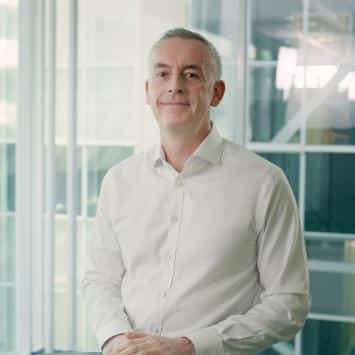TECH TUESDAY is a weekly content series covering all aspects of capital markets technology. TECH TUESDAY is produced in collaboration with Nasdaq.
Supported by marketplace technology that boosts institutional confidence, carbon markets can continue to develop and grow. Traders Magazine spoke with Gerard Smith, Vice President, Head of Product- Digital Assets & Carbon at Nasdaq’s Marketplace Technology business, about the current landscape and the outlook for future, both globally and in the key region of the Middle East and North Africa (MENA).
What is the current state of play for carbon trading and markets globally?

One issue is the fragmentation of markets. Another issue that is hampering these markets is that there’s little to no consistency between jurisdictions on how carbon credits are considered legally – some jurisdictions consider carbon credits as an expense, some think about it as an asset, some think about it as a commodity. And depending on the legal structure around those assets, that has a knock-on impact with respect to how they’re treated from a tax perspective and an accounting perspective. So that’s one barrier to participation in these markets, especially if you’re thinking about them from a global perspective.
Perhaps the biggest issue is a lack of liquidity, due to a lack of supply. The whole concept of carbon markets is to channel capital into projects – whether it be forestation, solar, or direct air capture of carbon – through market mechanisms. The investments channeled into those projects are what create the credits in the first place. Therefore the lack of supply of credits should be addressed as other barriers to market participation are addressed.
Has market infrastructure kept up with the emergence / growth of carbon markets? Where are the gaps?
The growth of carbon markets has been significant, and it should become more significant as more corporates set net-zero targets and must purchase credits to meet those targets. Right now, a lot of corporates tend to buy the credits and then retire them, so there isn’t a great deal of secondary market activity. This causes a problem with price transparency, which in itself can be a problem for the growth of these markets.
Another gap is a lack of intermediaries in the market. There is some custodian bank and broker activity, but lots of banks come to us and say they have clients who are interested in buying credits, but they would prefer for their banking and custody partners to deal with the sourcing, purchase, custody and retirement process on their behalf, i.e they want someone to take that pain away. So more participation of intermediaries, custodians, and brokers especially, would generate more secondary market activity and more institutionalization of these markets.
How can FMIs (Financial Market Infrastructures) such as Nasdaq support the development of carbon markets?
We are seeing some FMIs, who typically act as the local exchange in a particular jurisdiction with clearing and settlement facilities, beginning to become interested and step into carbon markets. Sometimes that’s because the local government has asked them to set up a carbon trading facility for that country.
The alternative to that is a growth of global marketplaces that tend to be driven by startup companies.
It will be easier for FMIs to step into carbon markets when there’s more clarity around legality, regulation, tax, etc. So in the short term, the main goals for FMIs will be to seek more clarity around some of those aspects, before they dive fully into facilitating those markets.
As an area susceptible to climate change impacts, why is MENA an ideal staging ground for the growth and maturation of carbon markets?
For one, the Middle East has seen incredible development of their capital markets, especially over the past 20 years. Looking at UAE or Saudi Arabia for example, they have sophisticated capital markets infrastructure in terms of exchanges, clearing, settlement, and risk management, so they are well-placed to take on a new asset class like carbon.
Second, most countries in the Middle East are big producers of oil and natural gas. Thereare many projects in the Middle East that can capture the carbon emissions from oil and gas production, and actually create carbon credits from avoiding what they would have emitted otherwise.
And third, the Middle East is a place where you can find vast amounts of capital. Deploying that capital from the Middle East into projects, especially in the global south, is an important route for capital to get into the projects in the first place. So, you see capital from the Middle East finds its way into places like Africa, where you can fund and invest in these projects to create the offsets that they need in the Middle East, or as an alternative to their own carbon capture and storage projects. Importantly, the channeling of capital to projects in the global south can also assist with sustainable development goals.
What do you see for the future of carbon trading and markets, both in MENA and globally?
We are likely to see many more corporates making net-zero commitments, which means that demand for carbon credits will grow. That’s good for voluntary carbon markets, because increased prices would make more projects viable in terms of being able to sell the credits they produce. That should bring more supply onstream over time.
There’s also likely to be more regulation, institutionalization and legal clarity. That’s a good thing, because people need to understand how to deal with carbon as an asset class.
Finally, there’s something in the Paris Agreement called Article 6.4, which makes it possible for countries to enter into an agreement with each other to trade emissions. So if the UK has a target of reducing emissions by 10, but they’ve only managed to reduce them by 8, they can go and find the other two from another country that they have an agreement with. It’s not yet fully understood how this mechanism for cross-border trading of carbon credits will work in relation to voluntary carbon markets, but as the framework becomes more operational, that should stimulate the market.
Creating tomorrow’s markets today. Find out more about Nasdaq’s offerings to drive your business forward here.









